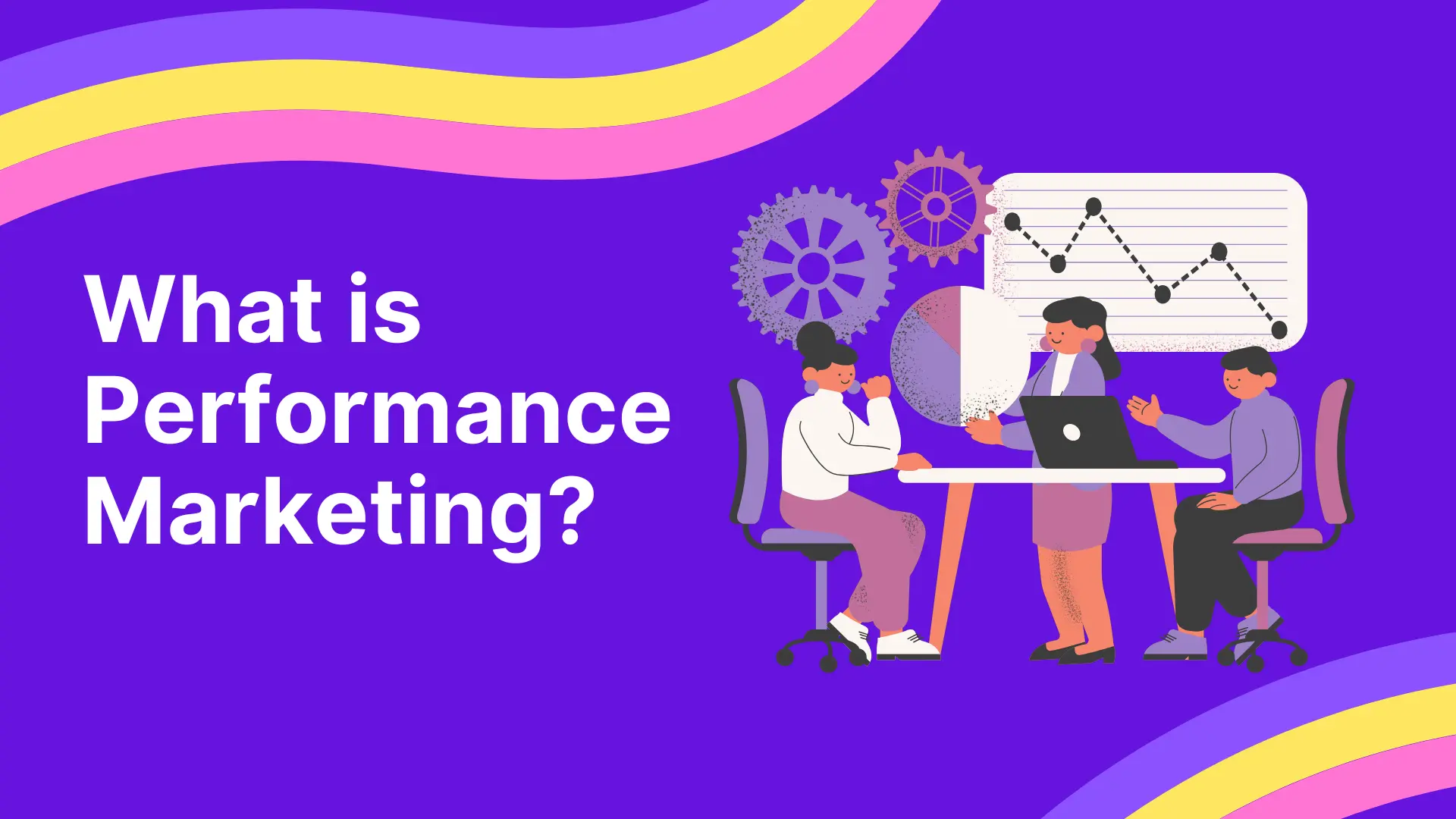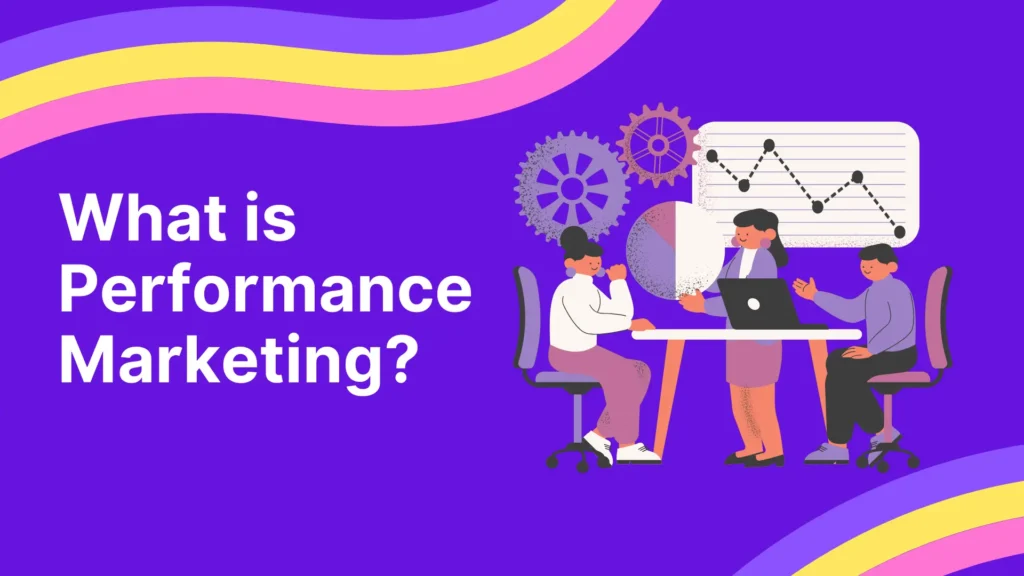What is Performance Marketing? A Comprehensive Guide
Welcome to the world of Performance Marketing – where every penny spent is quantifiable, attributable and directly influences results. Have you ever dreamed of only having to pay for advertising that converts?
Picture your marketing strategy where you are not only throwing money against the wall and seeing what sticks. That is the beauty of performance marketing which allows you to pay for only tangible results. Performance marketing is a data-driven, ROI-focused advertising strategy that allows you to drive specific KPIs (website clicks, leads or conversions).
Performance Marketing — What is it?
Performance marketing refers to an advertiser’s paying for measured results as distinct from the other idea of paying for advertising space. The results? Such performance metrics usually include clicks, sales, leads, impressions — or any other measurable form of consumer action.
Contrary to traditional marketing, where advertisers buy ad space or exposure ahead of time and hope for a win, performance marketing turns the tables. It’s like hiring a salesperson. They only get paid if they close the deal. Because of this model, interests are aligned on both sides: advertisers get measurable outcomes and marketing partners focus efforts on strategies that provide real results.
How Does Performance Marketing Work?
Performance marketing is a simple concept with a twist: brands pay only when results can be seen. Advertisers work with platforms, publishers or influencers to promote products in different channels such as through social media, search engines or affiliate networks. You are billed for your exposure potential (the way traditional media advertising as you know it works). Instead of this, whenever somebody takes an action that can be measured, like making a click, lead or the desired result – a sale.
Here’s the illustration of performance marketing at work:
- Define Your Target: First, you decide what you need — more clicks, leads, or orders.
- Choose Channels: The next step is to select the channels that the audience will be reached through – these may be social media marketing, content networks, display ads or search engines.
- Launch Your Campaign: Ad served to your audience, who is invited to take the desired action.
- A Payment, Based on Results: Advertisers only pay for real results. Example: a generated lead or a sale.

Performance marketing follows a simple logic: every dollar spent contributes to a specific goal — making your campaigns lean and efficient.
Performance Marketing Key Models
Performance marketing represents a variety of payment models — each one designed to meet different goals. Here are a few of the most basic:
- Cost Per Click (CPC): Advertisers pay when their ad is clicked. CPC — this is the best option for bringing traffic to your site or landing.
- CPM (Cost per Impression): How much is formatted on a CPM basis. Best for increasing brand awareness
- Cost Per Lead (CPL): This is when you pay for a conversion—such as someone entering their details into your contact form. It’s great for generating qualified leads you can nurture.
- Cost Per Sale (CPS): Advertiser pays when a sale is made. In affiliate marketing CPS is based on sales affiliates receive a commission for every sale they create.
- Cost Per Acquisition (CPA) : This is a slightly more generic metric that refers to any action or set of actions defined by the advertiser and may therefore include anything from sales, sign-ups etc.
Performance Marketing Models Comparison Table:
| Model | When You Pay | Best Use Case |
| Cost Per Click (pay per click, PPC) | When someone clicks your ad, or “pay-per-click” | Driving traffic to your website |
| Cost Per Impression | For every 1000 ad views | Building brand awareness |
| Cost Per Lead | When a user submits information | Generating sales leads |
| Cost Per Sale | Upon successful sale | Affiliate marketing |
| Cost Per Acquisition | After any predefined action | Broad campaign goals |
Performance Marketing Channels
Performance Marketing can be rolled out over different digital channels, all of them in their own unique way in reaching the audience and driving measurable actions. Without much ado, let’s dig into the best channels for performance marketing:
1. Affiliate Marketing
Affiliate marketing is a performance-based method that sees partners (affiliates) rewarded for promoting your goods or services via their own audience in return for an incentive on generated sales, leads, clicks and/or other significant actions. Affiliates are bloggers, influencers or websites that have access to an audience which is likely interested in your products.
Example: A blogger publishes a product review on his site and includes an affiliate link with that post. They make money when people read their content and buy products.
2. Search Engine Marketing (SEM)
On the other hand, Search Engine Marketing (SEM) is paid advertising in search engines such as Google ads when users make a query using one of your keywords. It is a very high intent purchase channel.
Example: When someone searches for “best running shoes”, your ad shows at the top of Google ads search results
3. Social Media Advertising
Facebook ads, Instagram ads, Linkedin ads and Tiktok ads are some of the platforms that have evolved so much in terms of performance marketing capabilities. Targeted ads provide an opportunity to reach your potential lead with user demographics, interests and behaviors allowing you track a specific business goal through running paid ads.
This would occur when, for example, you have run a sponsored post on Instagram that targets 18-35 years old fitness enthusiasts.
4. Native Advertising
Native — focused on creating ads in the same look and feel of what is published by other users so that they should have felt different while using any platform. Those native ads include sponsored articles or in-feed content because they can help you increase your engagement rates, given that the elements look as if organic.
For Example: an advertorial about your industry on a news website.
5. Display Advertising
Display advertising consists of a collection of visual promotions, such as banners, videos or even rich media to advertise a brand, product or service. These can be placed on websites, apps or even social media and targeted to what the user is doing online, their interests or demographics of some sort.
Example: Blog Sponsorship or banner ad on a popular blog promoting your most recent product launch.
6. Content Marketing
Content marketing is the process of creating valuable, relevant content to attract and engage your target audience. While content marketing serves brand awareness, it can also be performance-based (example: lead generation where users swap their information for a piece of gated content).
For example, a free eBook in exchange for an email address.
Reasons (or Benefits) Behind the Performance Marketing
As it has more benefits compared to an old traditional marketing strategy, here’re some benefits of Performance Marketing:
1. Low Risk and High ROI
Given its pay-for-performance model, performance marketing does away with much of the financial risk. Brands are only charged once they acquire results which make it easier to convert their money into high ROI. You are able to trace every dollar spent back to a measurable action, and campaigns can be scaled up/down accordingly.

2. Measurable Results
Performance marketing sits at the core of real-time data application and every move (clicks, impressions, conversions) hence can be measured to analyze. Brands can easily track metrics including conversion rate, cost per lead or sales with an ability to optimize campaigns on the go for improved results.
3. Targeted Advertising
A further benefit is that performance marketing can be incredibly targeted. When you create these segments, it proves who the brand is trying to reach and when which increases their chances of conversion also.
4. Flexibility and Scalability
You can tune your performance marketing campaigns up and down gracefully as you learn from the success of the previous campaigns. With real-time data, the intervention can take place on-the-fly at low cost if something is going wrong.
Performance Marketing Issues
There are many benefits to performance marketing, but it is not without its fair share of challenges which marketers have deal handle themselves:
- Attribution Challenges: With multiple touchpoints before the user converts, it is difficult to determine how much value or contribution each channel brings.
- Ad Account Bans: ad platforms are stringent in rules and one might wake up to find their ad account banned or limitations have been placed on the same. Businesses that operate heavily on ads are now at a risk — they could lose money.
- Over-Focus on Short-Term Metrics (Hyper-Short-Term Metric Obsession): When marketers are completely data-driven and focus all their efforts on immediate conversions, it often leads to the detriment of building a long-term brand. Performance marketing is not the best remedy for delivering a powerful brand message.
- Ad Fraud: Click fraud and fake impressions can be worrisome, as unscrupulous actors could use bots to stimulate clicks or conversions unnaturally, wasting away the ad spend.

Success Stories in Performance Marketing
For more real-life case studies of how brands are using performance marketing to deliver exceptional results, check out the following examples. These examples illustrate the power and utility of this strategy in industries as varied from one another.
Joolca, an Australian e-comm brand that sells outdoor products online was struggling with their incumbent agency who had become lazy leading to stagnation and ineffective campaigns. We found a bunch of things that needed to be improved after we took over:
- Creatives, Audience segmentation and Funnel strategies need huge improvement.
- Revamp the creatives and marketing angles to align with customer mindset and awareness at each stage.
- Implemented a full funnel strategy.
- Email marketing campaigns should be optimized.
Results:
| Metric | Before | After |
| Monthly Sales | $100,000 | $1,060,000 |
| Return on Ad Spend | 4.50 ROAS | 5.5+ ROAS |
With a singular focused campaign, more aligned website and better email flows Joolca moved from $100k in sales to achieve 10x growth.
As the Australian furniture brand Lounge Life reached a critical point at the start of The Great Confinement, with delays in receiving supplies from suppliers and cost containment measures. Our approach involved:
- Performing an in-depth audit and finding gaps in tracking, the account set up as well as creatives.
- Improving conversion tracking, particularly for phone calls.
- Implementing our proprietary Top Notch Media Buying Process.
- Campaigns structure and creative strategy improving.
Results:
| Metric | Before | After |
| Total Sales | $169,000 | $3,770,517 |
| Return on Ad Spend | 2.69 ROAS | 12.31 ROAS (initial 3 months) |
| Overall ROI | – | 919% |
Despite limiting ad spend to maintain logistics constraints, we’ve generated almost $3.8M in sales, with an avg ROAS of 9.19, since the beginning of our engagement.
An American jewellery brand in the spirituality niche, Karma & Luck, had a serious obstacle to overcome. Facebook accounted for the grand majority of online traffic for them, with significant underperformance from Google, and most sales on Google Ads came via branded searches. To address this, we:
- Went from only using branded campaigns to full funnel-based marketing, including: Shopping/Display/Video/Search Ads.
- Optimized the product feed with DataFeedWatch, launched competitive Shopping ads on different google placements.
- Started with remarketing then proceeded up the funnel introducing new creatives and review based ads.
- Created new Search Ads structure, based on product feed and dynamic site category.
Results:
| Metric | Before | After |
| Ad Spend | $4,720 | $17,300 |
| Return on Ad Spend | 3.05 ROAS | 9.66 ROAS |
| Total Sales | $14,400 | $167,000 |
| Revenue Increase | – | +678% |
Within the first two months, revenue from non-branded keyword campaigns was up sevenfold, and ROAS more than doubled. Karma & Luck has been able to scale massive revenue numbers by going beyond just branded campaigns and tapping into unique ad units.
How Orange Trail can help
Orange Trail is a Forbes-featured marketing agency. We provide whitelisted ad accounts for businesses of top ad platforms such as Facebook, Google and TikTok. Our expertise ensures compliance and stability, allowing businesses to scale without any bans or restrictions.
At Orange Trail, we eliminate the risks associated with ad account disruptions and offering tailored solutions that keep your campaigns running smoothly. By diversifying ad traffic sources and staying ahead of compliance challenges, we help businesses achieve consistent growth and success, free from operational concerns.
Key Performance Indicators (KPIs)
The proper KPIs is crucial for evaluating and perfecting your campaigns.
Essential KPIs:
- Click-Through Rate (CTR): % CTR is calculated as a number of clicks on an ad per 100 impressions.
- Conversion Rate: % CR is the number of people who complete an action divided by the number of people who clicked the call-to-action button.
- Cost Per Acquisition (CPA): Costs always matter. CPA is the total amount spent on an advertising campaign divided by the number of conversions.
- Return on Ad Spend (ROAS): A number that is calculated as a ratio. ROAS represents the dollar revenue generated by each dollar spent on an advertising campaign.
- Customer Lifetime Value (CLV): Customer Lifetime Value can be calculated as monthly recurring revenue multiplied by the number of months in the typical lifespan of a client.
KPI Table:
| KPI | Formula | Purpose |
| CTR | (Total Clicks / Total Impressions) x 100% | Measures ad effectiveness |
| Conversion Rate | (Total Conversions / Total Clicks) x 100% | Assesses landing page performance |
| CPA | Total Ad Spend / Total Conversions | Evaluates cost-effectiveness |
| ROAS | Total Revenue / Total Ad Spend | Determines profitability |
| CLV | Avg. Purchase Value x Purchase Frequency x Avg. Customer Lifespan | Guides budget allocation |
Conclusion
A performance marketing strategy is an effective long-term move for those businesses looking to adopt a transparent, measurable and results based approach in their companies. This means advertisers only pay for desired actions making it highly efficient and maximizing ROI. Brands can now reach the right people via such channels as social media, affiliate networks and search engines — only they pay for performance rather than eyeballs; no guessing or wasted marketing dollars.
If the time is right for your business, and if you want a way to scale with an advertising model that lets data do its thing, performance marketing might just be what takes you from one-stage growth.
Ready to scale your campaigns with confidence? This is where Orange Trail will help you through every step of the way.
Frequently Asked Questions (FAQ)
Is performance marketing SEO?
No. Performance marketing and SEO are two different things even though they can complement each other. Performance marketing is focused on paid advertising where the advertisers pay only when a specific action has been completed like clicks, forms submitted or sales. An effective SEO activity helps optimize a website to achieve top ranking on organic (natural free) search engine result pages which in turn leads the long-term traffic growth without directly paying for each click.
What is the difference between performance marketing and other marketing?
The key differences revolve around the payment and performance-based models. Performance marketing is results-based, with advertisers only paying when a consumer takes a desired action, ensuring incremental ROI. Traditional marketing is to spend first for the exposure and hope that it will return; it cares more about brand awareness and reach. They measure directly attributed consumer actions and call it performance marketing.
What is the marketing performance process?
Essentially, the marketing performance process is how you go about planning to execute and measure your campaigns according to data on results achieved. From establishing clear goals and KPIs, through selecting the channels & tactics that will help to best promote them; creating content then launching campaigns; tracking key metrics followed by analyzing results — finally making data-driven adjustments in order to improve its effectiveness and efficiency over time.
How to execute performance marketing?
Performance marketing execution:
- Establish concrete goals: Make clear what you want to achieve and design SMART objectives for those.
- Figure Out Who You Want to See it: Know your audience, they should be based on demographics, interest and behaviors.
- Pick Your Channels Wisely — Not every channel is for everyone (ie: social media, search engines and affiliate networks namely)
- Create Eye-Catching Ads: Make ads that drive momentum and clicks as in something you are very sure the audience will love to have.
- Use Tracking Tools: The utilization of analytics software to track performance metrics.
- Implement Your Campaigns: Advertise on selected media.
- Analyze and refine: always look for trends, constantly optimize your approach.
What is a performance marketing strategy?
Performance Marketing a comprehensive plan mainly concentrates on producing targeted, quantifiable results — and paying only for the regulars accomplished. It is all about defining real performance goals, choosing efficient channels and spending wisely on them, running personalized campaigns based around that audience segmentation etc., backed by continual reinforcements from monitoring data to get the best ROI.
What is a creative strategy for performance marketing?
In performance marketing, a creative strategy may revolve around producing content and visuals that inspire the target market to perform an action you want. This involves developing persuasive ad copy, creating attractive graphics or videos, tailoring messages to different audience segments, trialing creative A/B testing and ensuring the creative is relevant to your target market in order to drive engagement and conversion.





